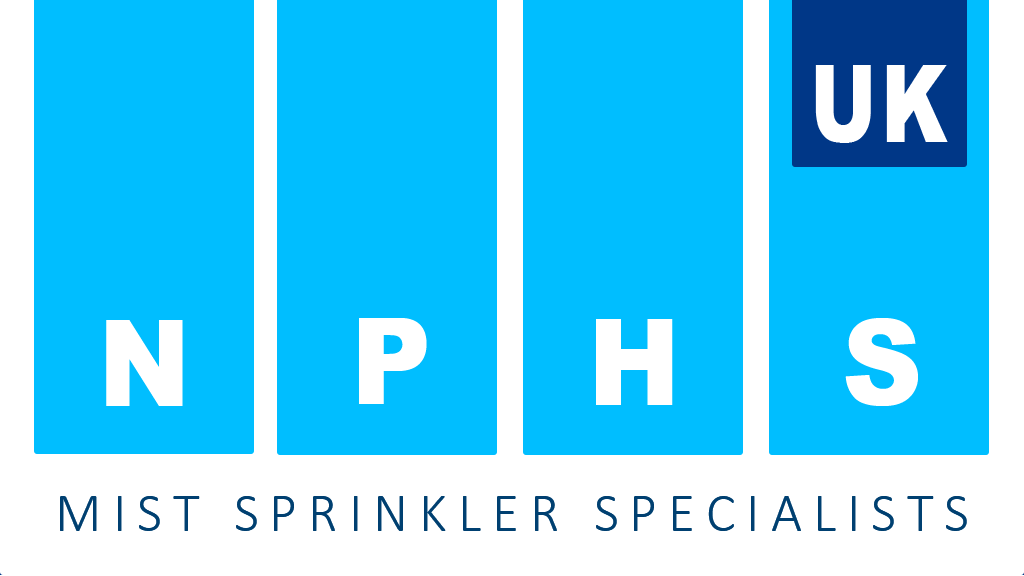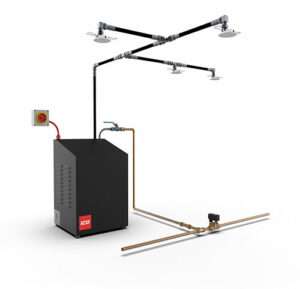Water mist systems may be quite successful in stopping the spread of fire if utilised appropriately. The systems function by spraying small droplets of water at a relatively high pressure, as the name implies. These systems function by decreasing the temperature and oxygen concentration to the point where combustion is no longer possible, and the flame goes out.
Water mist systems are primarily utilised in residential or domestic premises since they release less water than standard sprinkler systems, although they are becoming more widespread in commercial structures such as businesses, schools, and recreation centres.
However, for optimal efficacy, they must be developed with the precise environment in mind and thoroughly tested prior to installation. Obtaining third-party testing is a vital step in assuring the appropriate and safe operation of water mist systems for building owners and individuals responsible for fire safety within a facility.
Design with the building in mind
One of the most significant distinctions between a water mist and a sprinkler system is that water mist systems must be constructed specifically for the area, making each installation virtually wholly unique. This is due to the fact that there are fewer relevant standards or certification systems to rely on, and water mist components are frequently unique to each manufacturer and are not interchangeable. Building owners and individuals in charge of fire safety should work with a third party who has the knowledge and skills to conduct a full examination prior to installation, as well as advise on future actions and perform routine maintenance. This is the only method to assure that systems will function properly in the event of a fire.
BS 8458 water mist testing
Because water mist systems are so reliant on their surroundings, it’s vital that they’re thoroughly evaluated before being installed. The FPA is dedicated to raising fire safety standards in the built environment, and is one of the first UKAS-accredited fire testing facilities to offer testing on residential and domestic water mist systems in accordance with BS 8458: 2015.
This test assures residential and domestic system designers and installers that their system has been thoroughly tested and will work as intended in the event of a fire when installed under the test conditions.
Nozzle testing
Water mist nozzles should be tested on a regular basis to guarantee that they continue to function in the case of a fire. This should only be done by a third party who is not the system owner, manufacturer, installer, or maintainer, since this ensures impartiality and objectivity. Removing the nozzles should also be done by a qualified expert, since the water pressure can be quite strong, posing a major danger of damage and illness.
After ten years of service, the FPA recommended that nozzles be removed and sent for testing, and then tested every five years after that. This backs up the NFPA 25 Standard for the Inspection, Testing, and Maintenance of Water-Based Fire Protection Systems’ suggestion.
Water mist – and other automated fire suppression systems (AFSSs) – can assist to reduce the danger of fire and fire spread, preserving life and property while also limiting the potential for community-wide consequences. Water mist is a potential technique that, while not as well-known as sprinklers, can be very successful in specific settings and building types.
Despite this, they are generally subjected to less rigorous testing than sprinklers, which is a mistake given how different each system may be.
Instead, building managers and anyone involved in fire safety should obtain assistance from a competent third party to ensure that the systems are capable of protecting persons and property in the case of a fire.
To know more about the misting system, simply give us a call or send us an email, and we’ll get back to you with answers to any questions you may have.


